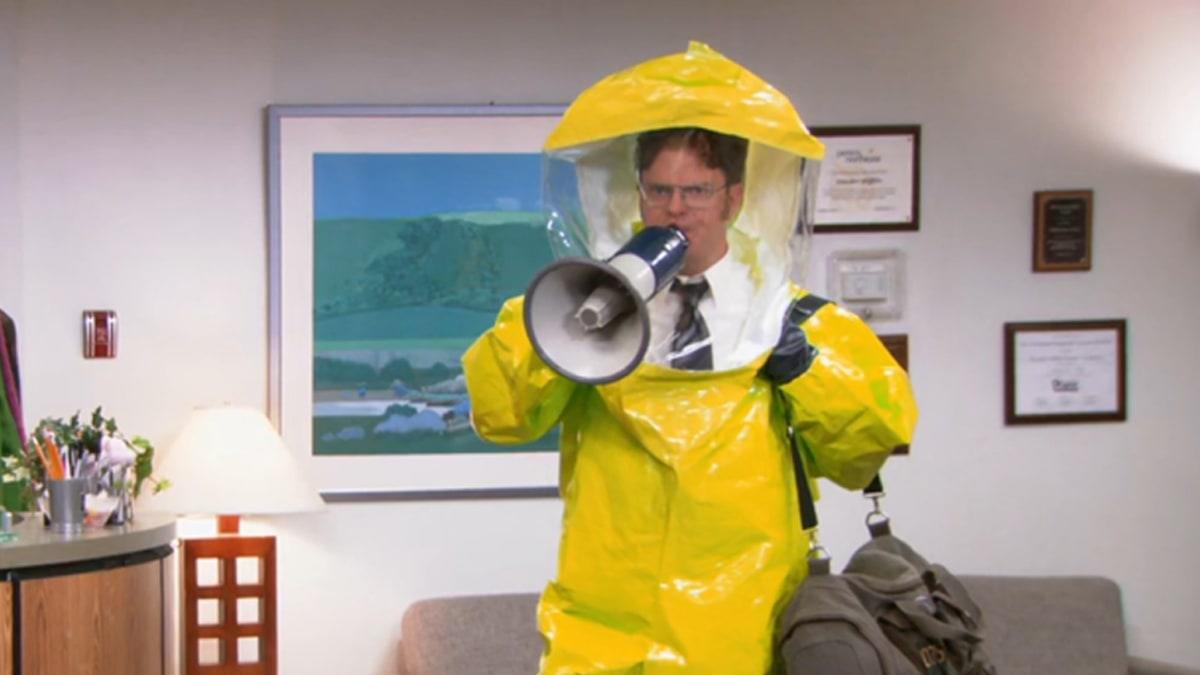Offices Will Never Look The Same In Post-COVID World Of Plexiglass & Temperature Checks
When Americans finally return to their business parks, complexes, skyscrapers, and ultimately their desks for ‘regular’ in-person work to resume, it will be a much different world.
A recent Bloomberg exploration of just what the typical American office worker can expect imagines the scenario that follows, which seems akin to a strict and exhaustive regimen already a reality in Wuhan and other places in China, forever changing what post-COVID-19 ‘normal’ looks like.
The report is aptly titled, The Office You Left Is Not Going to Be the Office You Return To — because the tragic new regimen for most, especially in urban centers will likely be: Goodbye, open desk plan. Hello, masks, temperature checks, and plexiglass walls.

Recall that ground zero for the global outbreak, the industrial hub of Wuhan, has come roaring back to life in the past month but more in the way of a dystopian version of itself after the virus peaked there in February and now with almost no new infections occurring according to official numbers. We said earlier that it provides a glimpse of what hard-hit urban centers in the West may look like in a new post-lockdown world.
And in the United States, something akin to this is coming, the report begins:
Your first day headed back to the office will likely feel different from the minute you wake up. Imagine the morning begins with a self-administered Covid-19 symptom and temperature check. An app will report the results to your boss. If all’s well, a low-occupancy company provided shuttle will take you to work. Everyone on it will be wearing a mask.
Once at the office, a second health check. Attendants will strictly control access to doors, elevators and common areas to prevent close contact. The route around the office will be one-way only. Formerly jammed open desk plans will sit half-empty. You may be encased in a makeshift cubicle made of plexiglass sheets.
To avoid overcrowding, keycards or sensors will monitor your whereabouts throughout the day. Your smartphone may vibrate to alert you to coworker traffic, like Waze for commuting to the copy machine. Lunch will come hermetically sealed. Say goodbye to communal coffee breaks.
Many health analysts predict that even if national COVID-19 numbers soon go on a steep decline, in the best case scenario, a vast segment of the population will still not be comfortable stepping foot in a possibly crowded office anytime soon.

A number of companies are already planning drastic interventionist steps to protect their workforce, such as kiosks for self-serve health screenings. One company implementing such a program is co-working space provider Convene.
Its CEO said, “I don’t think people are necessarily going to be comfortable coming back to work right away.” She added that perceptions and psychology will play a big part: “They’re going to want to know that they’re going to be safe.”
And consider this “comforting” likelihood of office complexes coming to resemble airport security screening checkpoints:
The pre-Covid workplace, with its shared desks and common areas designed for “creative collisions,” is getting a makeover for the social distancing era. So far, what employers have come up with is a mash-up of airport security style entrance protocols and surveillance combined with precautions already seen at grocery stores, like sneeze guards and partitions.
Tech and financial giants like IBM, Hewlett Packard Enterprise Co., JPMorgan Chase & Co., Citigroup Inc. and Goldman Sachs Group Inc. are already planning such new procedures as thermal scanning checks, which could prove controversial given the major global source for such items remains China.
Automakers lay out back-to-work playbook for coronavirus pandemic – Axios https://t.co/hmr4VG5Zbc
— Claude Taylor (@TrueFactsStated) April 10, 2020
This serves as a reminder that though the convenient rationale at this point appears to be that everything from offices to manufacturers to warehouses must preemptively prepare for their workforce coming back, it remains the dangerous pattern is once certain cutting edge but legally and morally questionable technology gets put in place, it’s likely there’s no going back.
“Give people time to mourn the past, because you may not care about it, but they do,” one business tech analyst remarked to Bloomberg, underscoring that whenever the economy does finally coming roaring back to life, it will be a very different landscape for white collar workers.
Tyler Durden
Mon, 05/04/2020 – 16:45